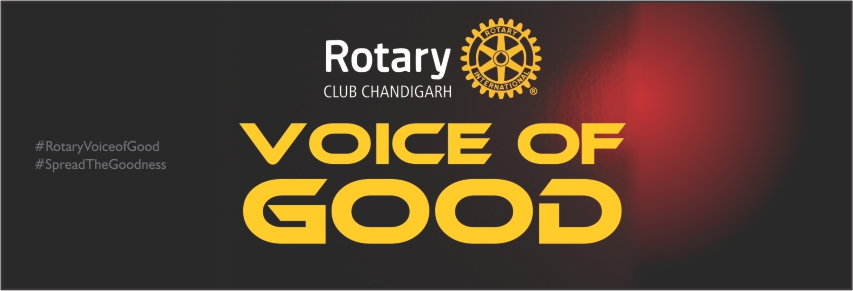A child being vaccinated for polio in India.
(Shutterstock)
At a time when the world battles Covid-19, the story of how the
polio virus was eradicated brings hope that mankind will triumph over
adversities at all costs
By RK Saboo
PUBLISHED
ON JAN 25, 2021 The Hindustan Times
A child being vaccinated for polio in India.
(Shutterstock)
On
January 13 this year, India celebrated ten years without polio, the last
patient to be diagnosed with the disease on this date in 2011 being
two-year-old Rukhsar of Howrah.
For her
we were too late but after that India was well on its way to achieving the
status of a polio free country.
In
2012, the government of India and Rotary organised a polio summit at Vigyan
Bhawan, New Delhi and just before the inauguration, Bruce Aylward from the
World Health Organisation (WHO), Geneva, came to the dais and announced that
India had been removed from the active list of polio endemic countries.
On
March 26, 2014, India was certified by WHO and declared polio-free. That is the
reason why January 13 is a memorable day in the public health history calendar.
It was
estimated that in 1988, 450 children in India were affected by polio every day.
Only 1 out of 200 children who contracted the poliovirus got paralysed. The
other 199 went undetected. Experts opined that India would be the last country
in the world to eradicate polio (even as late as in 2002), because of its huge
cohort of 170 million children below the age of 5, the population density,
unsanitary conditions, impure drinking water, and enteric diseases, etc.
India’s
victory over polio was achieved after a long drawn struggle.
From
3,50,000 children affected by Polio in 122 countries of the world in the ’80s,
the global partnership of Rotary with WHO, UNICEF, Centre for the Control of
Diseases and Prevention (CDC), Bill and Melinda Gates Foundation, and numerous
partners except for Afghanistan and Pakistan, the world as of now is free of
polio. Rotary has contributed more than $1.7 billion and countless volunteer
hours to immunise more than 2.5 billion children in countries worldwide.
Rotary’s
advocacy efforts have also played a significant role in decisions by donor
governments to add more than $7.2 billion to the effort.
It all
began in 1977 when Sir Clem Renouf who was nominated as president of Rotary
International came across an article in the Reader’s Digest about eradication
of small pox. That prompted him to look for another health challenge facing the
world. After discussions with numerous health agencies, polio was identified as
the biggest threat to the children of the world.
In
1979, Rotary initiated the polio immunisation campaign with Philippines by
acquiring six million doses of OPV (oral polio vaccine) developed by Dr Albert
Sabin and immunised the total population of young children in the country.
Encouraged, Rotary took up this programme to free the world of this dreaded
disease.
Despite
World Health Assembly in 1988 persuading all nations to join in this fight, no
substantive headway was made in India. Late Sudarshan Agarwal, then secretary
general of Rajya Sabha and also a senior leader of Rotary, prompted some
members of Parliament to ask questions in both houses about why India was
lagging in polio eradication while many countries had gone far ahead.
Due
credit has to go to Dr Harsh Vardhan, currently the Union minister of health
and family welfare, for his contribution in changing the direction of the polio
movement. It was one single factor that helped India finally reach its
eradication goal. Before 1994 the bureaucracy at the government of India level
did not believe in the strategy of National Immunisation Day (NID), observed so
successfully by other countries including large population areas such as China
and Brazil.
Dr
Harsh Vardhan took the immunisation initiative in Delhi on October 2, 1994,
naming it the pulse polio programme. With D-Day approaching, however, the
plague endemic popped up in Surat with an all-too-real threat over Delhi.
However, Dr Harsh Vardhan was determined to go forth. All Rotarians and other
stakeholders assured active participation. Wearing masks the health workers of
the Delhi government with the support of Rotarians, reached out to 12 lakh
children in a single day to protect them from polio and also the plague.
The
then newly appointed Union health minister AR Antulay grabbed the opportunity
and convened a meeting of all state health ministers where I could make a presentation
to them. The result was the adoption of a plan for observing NID. This was the
changemaker in the policy. It was also decided that to ensure the success of
the programme the Indian government had to be in the driving seat, which was
also done. Rotary took up the responsibility of supplying the entire polio
vaccine stock and also funding the activities of WHO and UNICEF in the country.
India
has been very fortunate that irrespective of the party in power, the
immunisation efforts continued year after year. Uttar Pradesh and Bihar,
however, had problems with minority communities boycotting immunisation due to
false rumours. The government encouraged Rotary to develop a connect with these
communities. Through notable work conducting free polio corrective surgeries
and befriending Ulemas this hurdle too was crossed
In
August 2020, Nigeria, and all of Africa as a result, were declared polio-free.
The
only countries with polio cases now are Pakistan and Afghanistan. All efforts
are being focused on them and after three years of nil cases the entire world
will then be polio free, the second disease to be vanquished after smallpox.
Step by
step, overcoming hurdles, never losing determination despite setbacks, the
Indian government with Rotary and other partners moved forward.
Indeed,
the last decade has shown that persistence, perseverance and perspiration can
move mountains.
Victor
Hugo, well known poet and novelist rightly said, “Perseverance, secret of all
triumphs”.





